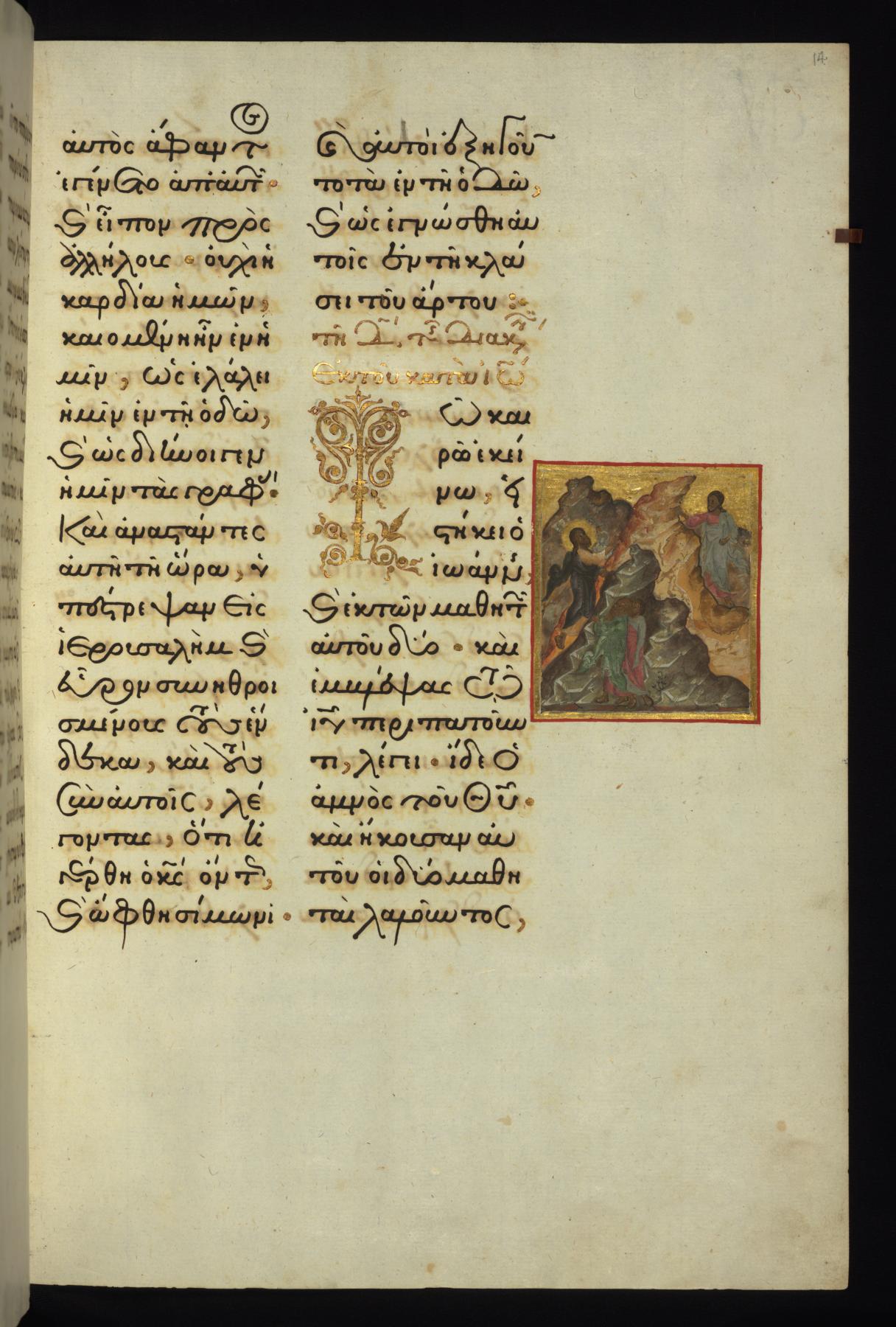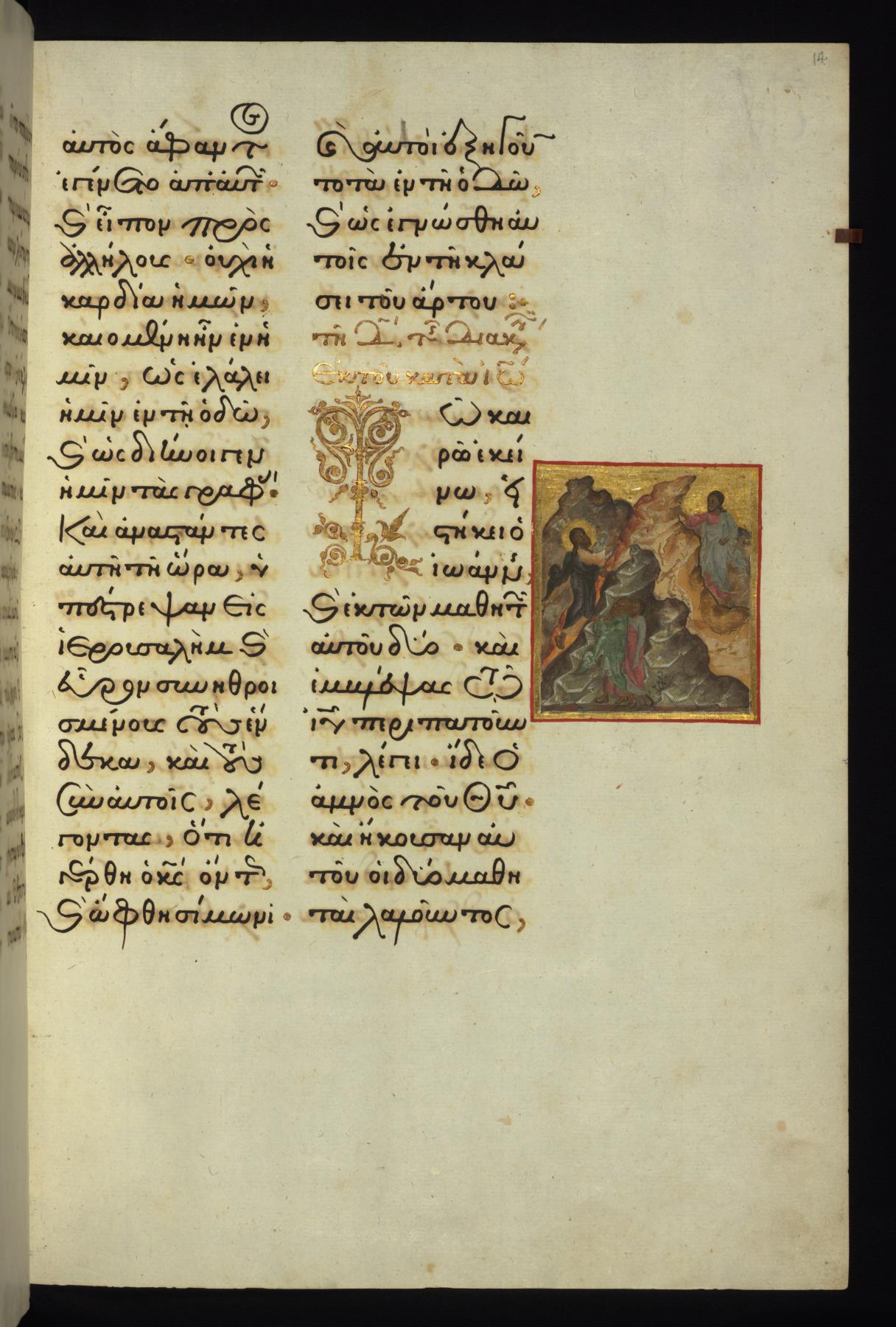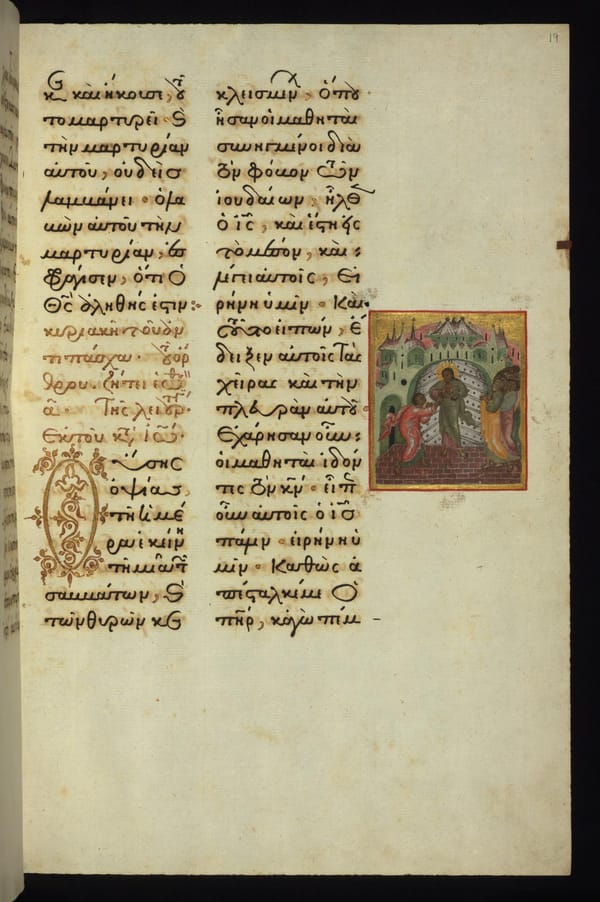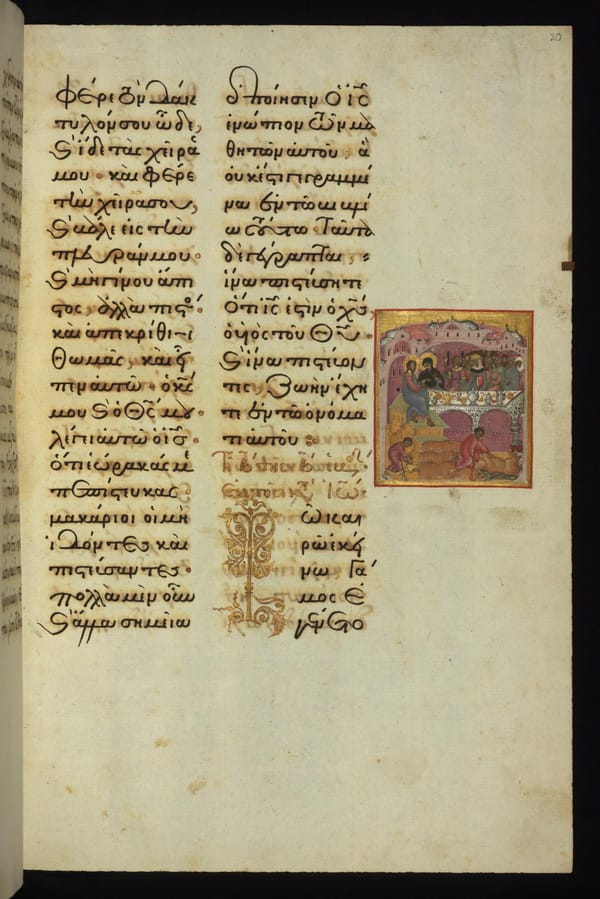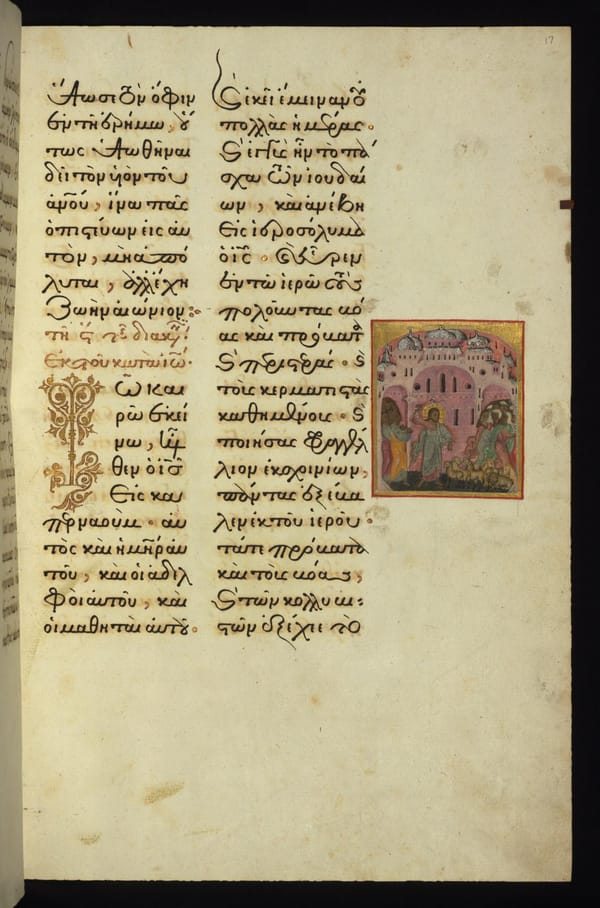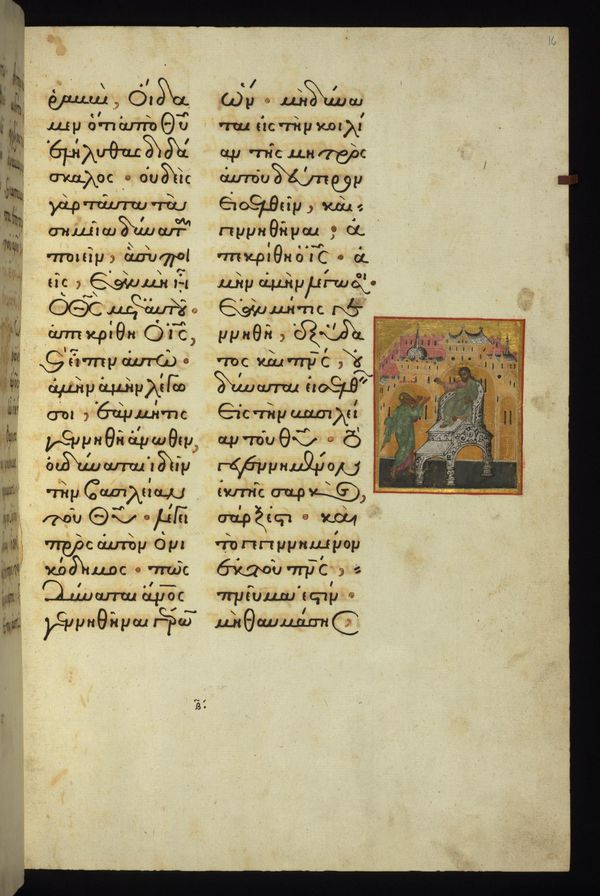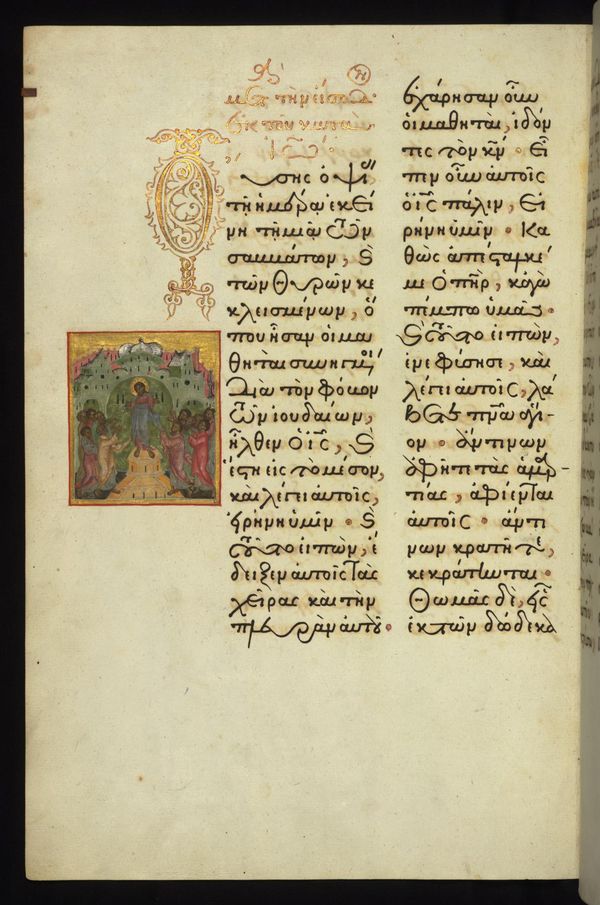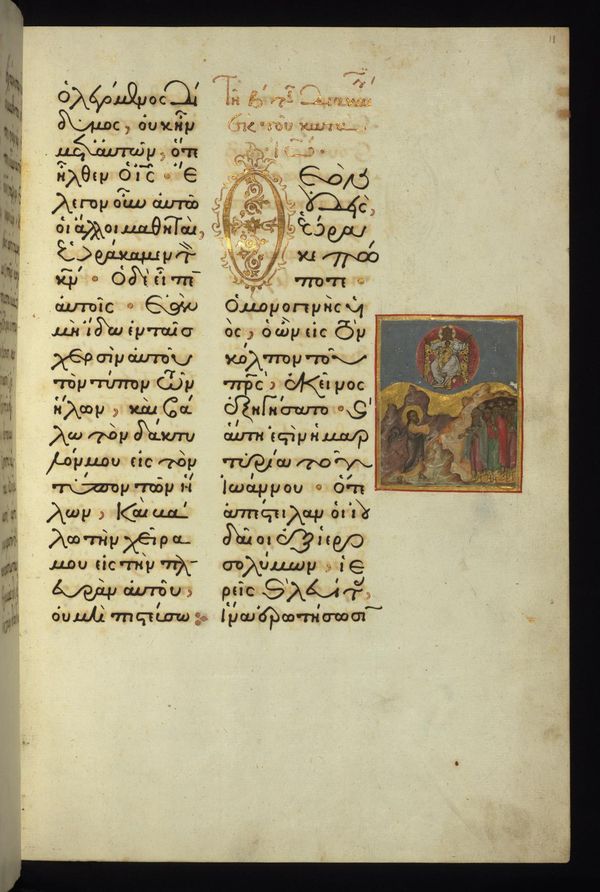About the Image:
Here is a beautiful page from a Byzantine-style illuminated manuscript. Manuscripts such as these played a crucial role in preserving religious texts, stories, and iconographies during the medieval period. Let's delve into the components:
- Text:
- The text is written in Greek, a significant language for both early Christian and Byzantine eras. The choice of the Greek language was critical because many of the early Christian texts, including the New Testament, were originally written in Greek.
- The elegant script and decorative flourishes give a clue to the importance and reverence associated with the content.
- While I cannot provide a direct translation without further examination, based on the context, this manuscript likely contains a religious narrative or scripture.
- Illumination:
- The illustrated section depicts "Christ coming to John the Baptist in the desert." John the Baptist is an important prophetic figure in Christianity, known for baptizing Jesus and heralding his ministry.
- The image seems to encapsulate a moment of divine revelation or communication between the two figures. Their positioning, with Christ approaching John, signifies the importance of John's role in recognizing and heralding the arrival of the Messiah.
- The artistic style, with its vibrant colors, gold accents, and attention to detail, is characteristic of Byzantine art. Such illuminations served not only as decoration but also as a means to convey theological truths and narratives visually.
- Historical Context:
- The scribe, Lukas of Cyprus, created this piece during the late 16th century, a time when the Ottoman Empire controlled much of the eastern Mediterranean, including Cyprus. Despite the political changes, the Christian communities in these areas continued to produce religious art and manuscripts, often blending Byzantine traditions with influences from the broader Ottoman world.
- The time frame, 1594-1596, indicates that this manuscript was crafted during a period of transition and synthesis of cultures.
In summary, this manuscript page is not just a piece of religious art but also a testament to the enduring nature of faith and the importance of cultural preservation. It serves as a window into the spiritual and historical realities of its time.
🙏🏽
This image is in the public domain.
